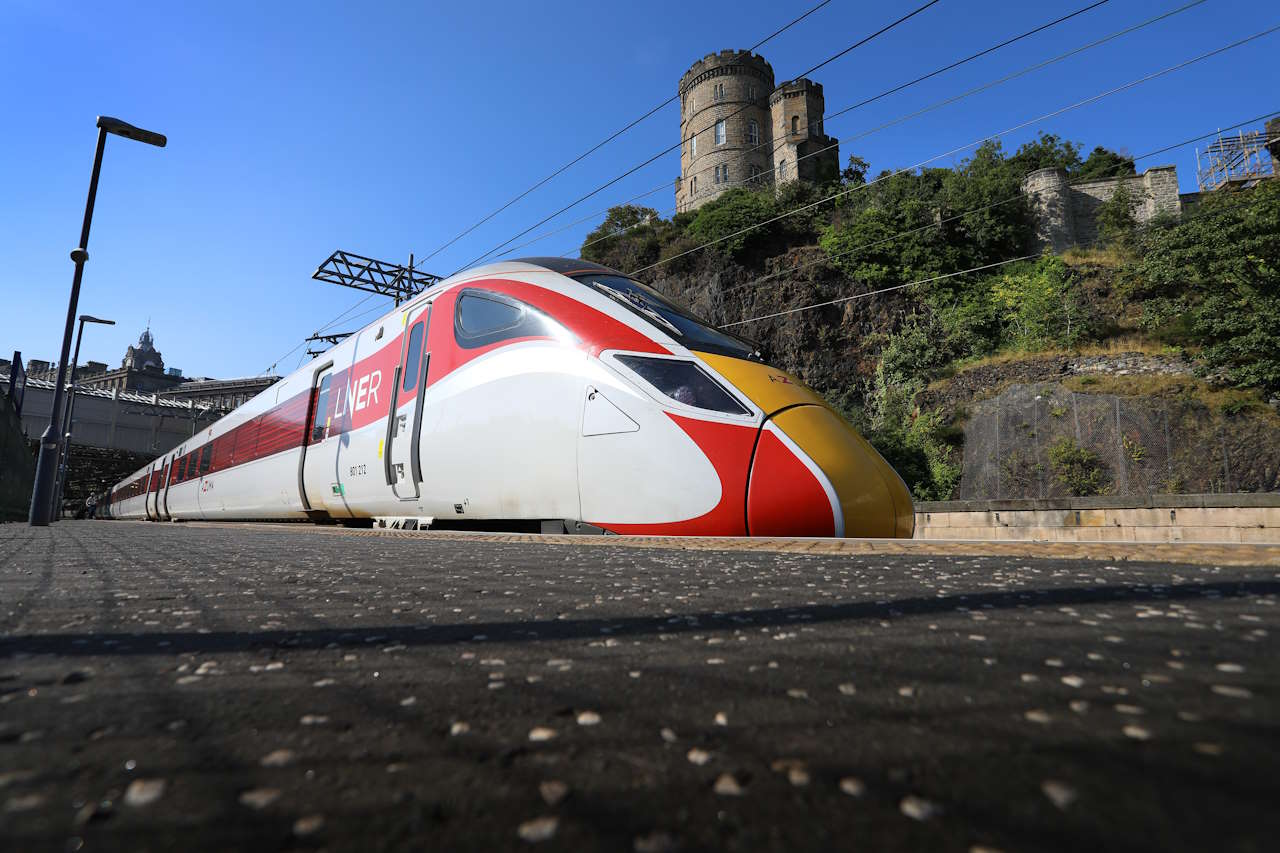The Rail Delivery Group (RDG) has released figures showing that rail travel creates ten times less carbon emissions per passenger than the equivalent car journey and thirteen times less than travelling by aeroplane.
The new data compares carbon emissions for a passenger journey from London King’s Cross to Edinburgh Waverley, chosen as a typical long distance, electrified commuter train route. It shows carbon emissions of:
- 12.5kgCO2e by train,
- 136.4kgCO2e by car
- 165.1kgCO2e by plane.
The study used detailed data is the first to use detailed data about railway journeys, including engine type, fuel type, journey distance, occupancy and carriage layout, and combine them to illustrate the environmental benefits of rail travel.
This method of calculation contrasts with the measure used by the Department for Environment, Food & Rural Affairs (Defra). The RDG claims that its use of granular data more accurately demonstrates how travel choices impact carbon emissions.

The figures have been produced as part of the rail industry’s Green Travel Pledge, which aims to encourage greener travel choices by providing detailed, empirical data on the carbon emissions of rail journeys.
The Rail Delivery Group Detailed has pledged to provide businesses with carbon emission data for rail journeys across Britain later this year. It is working with Great British Railways Transition Team Thrust Carbon, Fabrik and Black Box Partnerships.

Jacqueline Starr, CEO at the Rail Delivery Group, said: “This is a preliminary result but it shows what we all know – that rail is by far the most sustainable travel choice for businesses and business travellers.
“Choosing rail over more polluting methods, like cars and planes, is an easy way to help protect the planet.
“We want to empower businesses to make greener travel choices.
“Businesses have been asking for a tool to demonstrate the environmental benefits of shifting business travel journeys from planes and cars to rail. We are now delivering this.
“We are really excited to be rolling out accurate and reliable carbon emission data for rail routes across Britain as part of our Green Travel Pledge later this year so businesses can accurately demonstrate how rail travel is helping them to reach their environmental, social and governance (ESG) goals.”
Kit Brennan, Founder and Head of Product at Thrust Carbon which has helped to develop the methodology behind the new rail carbon calculations, said: “Businesses always knew that rail was the greenest way to travel; but for the first time we now know just how much greener it is.
“This is the first time we’ve combined such granular data on occupancy, journey distance, carriage layout and a number of other factors to provide an accurate and reliable figure for greenhouse gas emissions.
“We are excited about expanding the rail carbon calculator to include rail routes across Britain to support businesses to travel more sustainably in future.”
Clive Wratten, CEO at the Business Travel Association (BTA), said: “We’ve heard loud and clear from our members and the business travel community, that consistency in carbon measurement is an imperative.
“This initiative from RDG on behalf of the whole rail industry has the potential to provide clarity and a robust green message to all parts of business travel.”






Responses
The carbon emissions from any individual on a railway journey will be critically dependent on the passenger occupancy of the train and how this varies during the journey. Travel by car emissions can be calculated as a worst case with just single occupancy but it’s not at all clear how travel by train emissions are calculated. Is there some “average” train occupancy used – or is full occupancy assumed to give the most advantageous figure for rail travel?
Everyone knows that data of how much emission is to come from the power station while the trains is in use? A lot more than the ferries that I can guess.